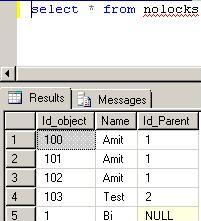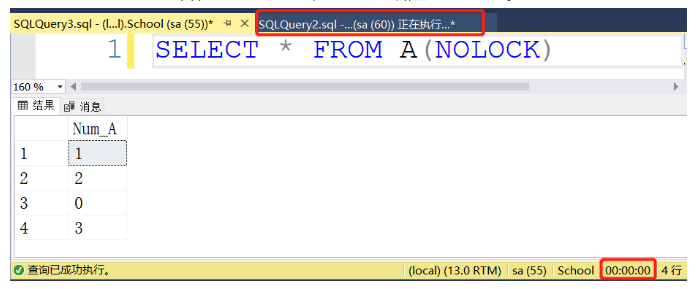
#Sql deadlock with nolock update
UPDATE Book SET AuthorId = 1 WHERE BookId = 2 - Process B

UPDATE Author SET Email = WHERE AuthorId = 1 Here's an example of two SQL statements that would cause a deadlock: - Process A

Introduction to Deadlocksĭeadlock is a special blocking scenario that occurs when two processes are blocked by each other because they are attempting to access a resource that it locked by the other process. Process B is said to have been "blocked" by Process A. The other process, i.e., Process B waits for Process A to complete so that the lock on the shared piece of data is released. Suppose Process A has locked the piece of shared data. This situation occurs when two processes (say Process A and Process B) need access to the same piece of data at the same point in time. Relational databases take advantage of locking when running concurrent operations to prevent data inconsistency and data loss. Locking protects data integrity during concurrent transactions. This prevents two SQL statements from updating the row at the same. In order to edit this row, the SQL statement would have to first acquire the lock. Imagine that each row in your table has a "lock". In this section, I'll discuss the concepts to understand why deadlocks occur.
#Sql deadlock with nolock free
Looking for a modern SQL editor? Try Arctype's free SQL editor for easy queries, visualizations, and sharing.
#Sql deadlock with nolock how to
In this article I'll discuss why deadlocks occur, how different databases handle them, how to resolve them, and tips on how to prevent them. It occurs when two processes attempt to gain exclusive access to a resource, and each of them waits on the other to complete before moving forward. Please let me know when you need more info or explanation.Are you looking to improve your database performance? If you've already taken care of the low-hanging fruit like database indexes, then deadlocks in your database could be the culprit.ĭeadlocks create situations similar to a traffic jam at an intersection, where none of the cars can move. Please note that this is just a tip of the iceberg and find out more about locking, lock promotion, database transaction scope, and locking types (optimistic, causious, paranoid).Įspecially with timers in a multi-tenancy situation this problem will occur sooner or later.

The only way to prevent this is to do proper analysis of the access paths to the data by the concurring processes and take charge of the sequence in which database records are being locked. Problem will grow bigger when other processes join the embrase and the problem is to become worse, That will never happen and thus the DBMS decides to kill one the two processes to prevent that this Process B holds a lock on record Y and wants to lock record ZĪs you can see the processes are waiting on each other to release the lock on the records they need. Process A locks record Z and wants to lock record Y What you don't see is that records in the tables (and indexes) are (implicitly and sometimes explicitly (GetForUpdate)) being locked during the processing of your SELECT, UPDATE and DELETE statements. Two processes work with the exact same data. When the database management system (DBMS, SQL Server in your case, Oracle in my environment) detects a deadlock this is what happens: A deadlock is also called 'a deadly embrase'.


 0 kommentar(er)
0 kommentar(er)
